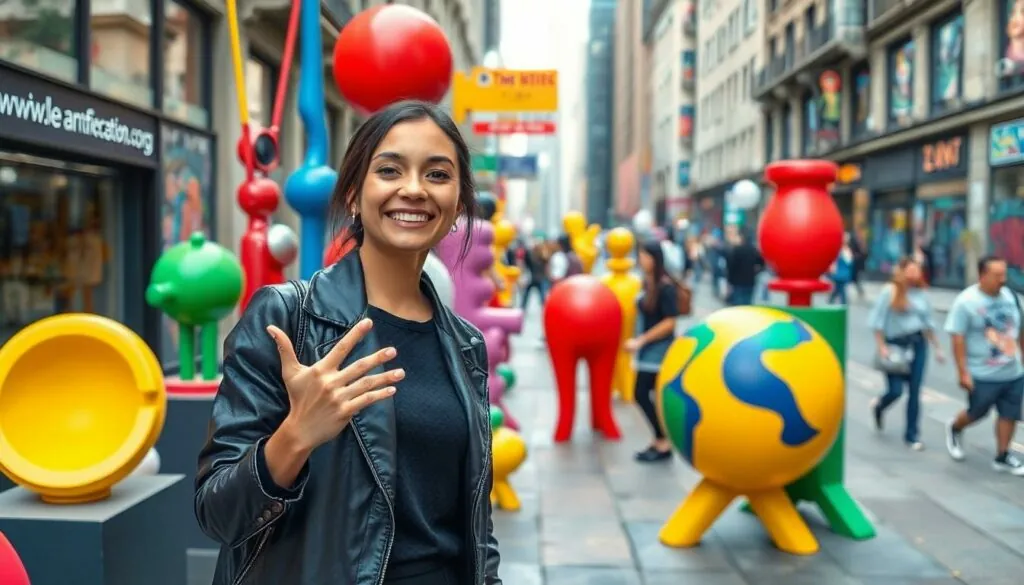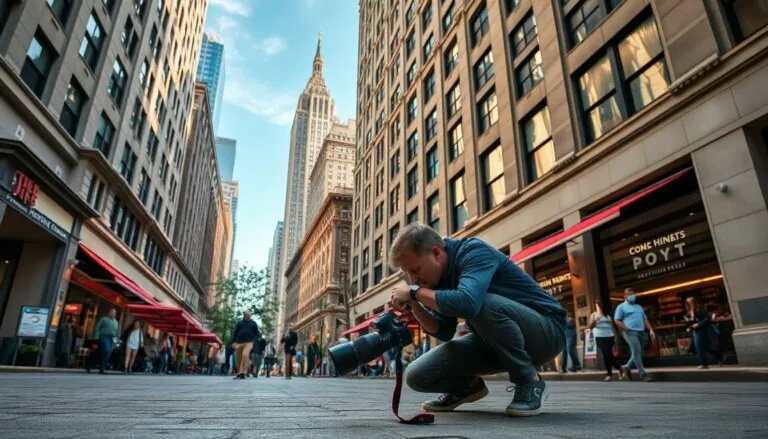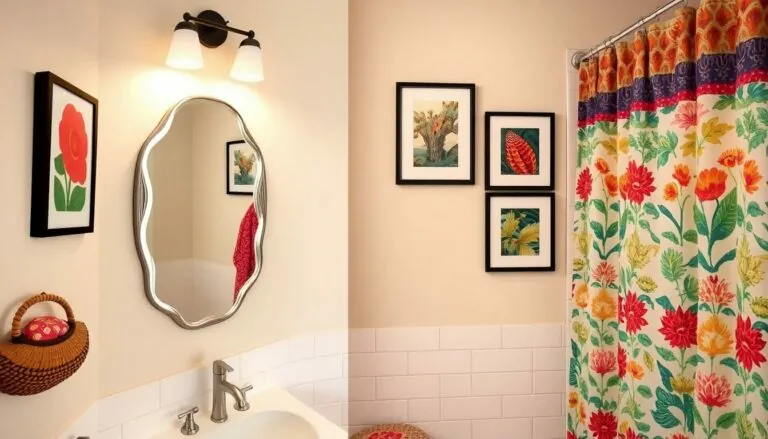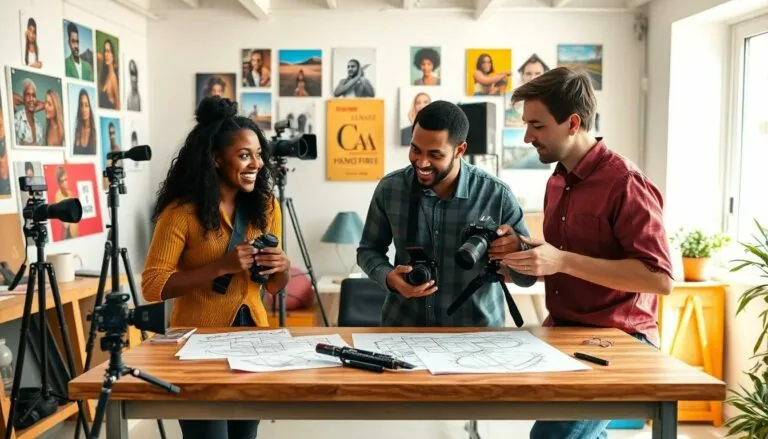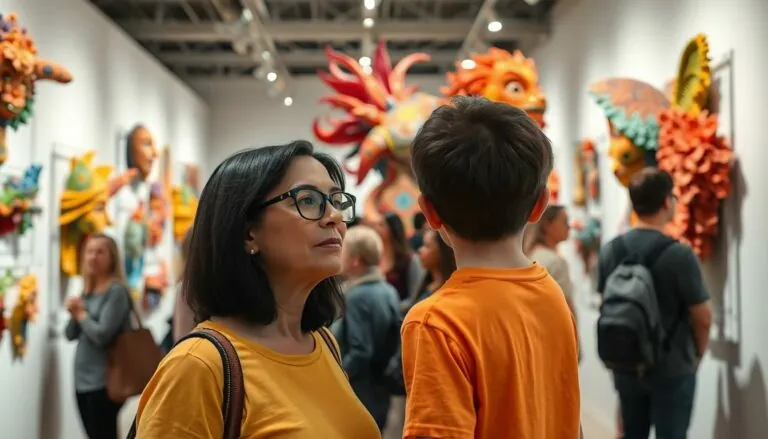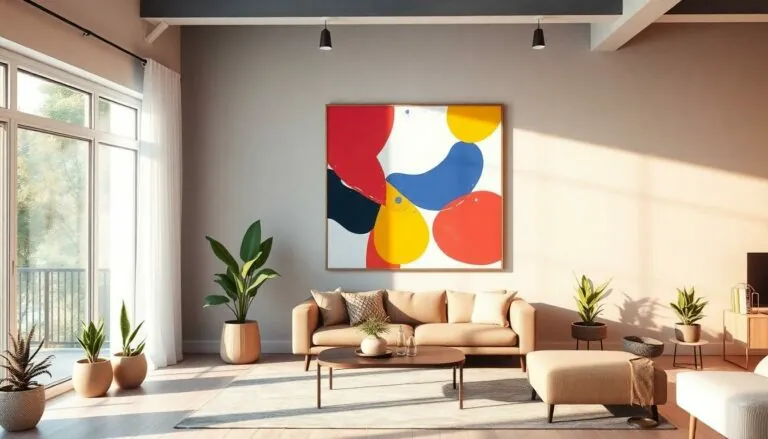Table of Contents
ToggleModern art isn’t just a splash of paint on a canvas; it’s a wild ride through creativity that’ll make you question everything you thought you knew about art. From mind-bending installations to quirky sculptures, today’s artists are breaking boundaries and redefining what it means to be “cool.” Forget the stuffy galleries of the past—this is art that speaks to the soul and tickles the funny bone.
Imagine standing in front of a giant banana taped to a wall or a room filled with inflatable furniture. These pieces don’t just hang around; they provoke thought, laughter, and maybe even a little confusion. Dive into the world of cool modern art, where the unexpected is the norm and every piece has a story that’s just waiting to be told. Get ready to explore the vibrant landscape of contemporary creativity that’ll leave you inspired and entertained.
Overview of Cool Modern Art
Modern art encompasses a broad range of styles and philosophies that break away from traditional artistic norms. Artists often prioritize experimentation and self-expression, creating pieces that provoke thought and stimulate conversation. Unique installations and interactive pieces invite audiences to engage directly, altering the perception of art as a passive experience.
Sculptors redefine mediums, using unexpected materials like recycled objects, light, and even sound to construct their visions. These works reflect societal issues, personal narratives, and cultural critiques, encouraging viewers to consider multiple perspectives. Abstract forms and vivid colors characterize many modern paintings, illustrating emotions rather than realistic representations.
Street art represents yet another facet, empowering artists to reclaim public spaces and communicate messages beyond gallery walls. Murals can transform urban landscapes into vibrant, thought-provoking environments that challenge viewers to reflect on their surroundings. Innovative performance art integrates movement and storytelling, often blurring the lines between artist and audience.
Technology also influences modern art, with digital artists creating immersive experiences through virtual and augmented realities. These pieces often explore themes of connection and isolation, mirroring contemporary life. Installations that incorporate virtual elements invite participants into alternative realities where imagination knows no bounds.
This diverse landscape offers something for everyone, from traditional art enthusiasts to first-time viewers exploring modern creativity. Modern art invites audiences to question their assumptions about artistry, revealing the complexities that define our world today. Embracing the unexpected leads to deeper understanding and appreciation for these innovative works.
Influential Artists in Modern Art
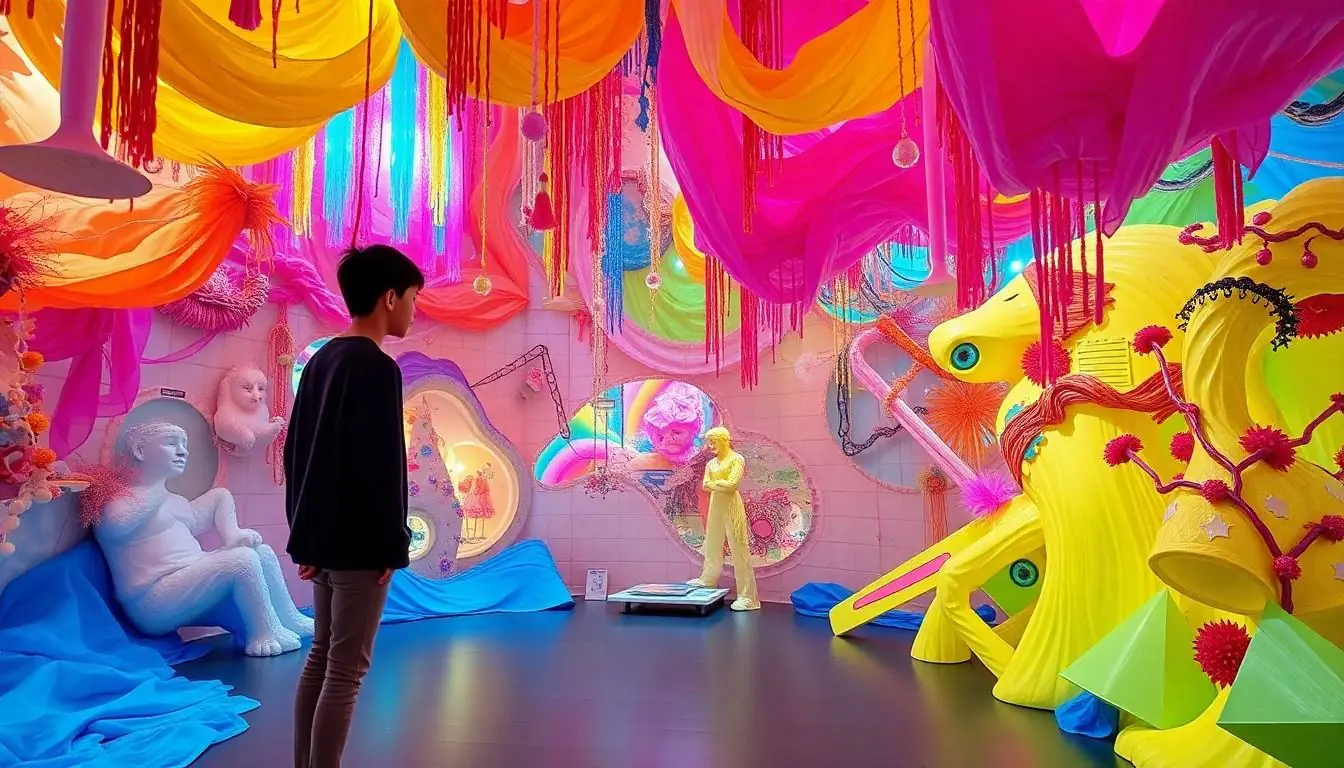
Modern art thrives through the contributions of diverse artists, both emerging talents and established icons. Their unique perspectives shape the contemporary landscape, pushing boundaries and redefining creativity.
Emerging Talents
Many emerging talents bring fresh ideas to modern art. Young artists often experiment with unconventional materials, resulting in installations that challenge perceptions. Installation artist Simin Rafi, for instance, captives audiences with immersive environments. Multimedia creator Tabor Robak merges technology and art, showcasing potential through virtual experiences. These innovative minds invite viewers to interact, fostering deeper connections with their work. Through social commentary and personal storytelling, emerging artists spark conversations that resonate with contemporary issues and elicit emotional responses.
Established Icons
Prominent figures dominate the modern art scene with impactful legacies. Ai Weiwei exemplifies an artist’s political voice, using activism as a critical component of his installations. Yayoi Kusama captivates viewers with her immersive infinity rooms, illustrating the endlessness of perception through polka dots. Street artist Banksy remains influential, using anonymity to provoke thought and challenge societal norms. Each established icon contributes timeless pieces that inspire future generations, ensuring the evolution of modern art continues. Their mastery and innovation ensure that contemporary artistry remains engaging and relevant.
Key Characteristics of Cool Modern Art
Cool modern art features distinct characteristics that set it apart from traditional forms. These elements invite viewers to engage in a deeper exploration of creativity and expression.
Use of Color and Texture
Color plays a vital role in modern art, often serving as a means of emotional expression rather than mere representation. Artists opt for bold hues to evoke specific feelings, creating landscapes filled with vibrant energy. Texture becomes equally important, as varied surface treatments add tactile dimension to artworks. Mixed media techniques allow the layering of materials, enriching visual experiences. The combination of color and texture encourages viewers to form personal connections, making the artworks resonate on individual levels.
Themes and Subjects
Themes in cool modern art often address contemporary societal issues while reflecting individual narratives. Artists explore topics such as identity, isolation, and global crises, challenging audiences to confront uncomfortable truths. Subjects may range from abstract concepts to relatable experiences, fostering empathy and dialogue. Many artworks encourage interpretations that vary widely based on personal backgrounds and beliefs. This focus on thematic richness promotes ongoing conversations about the human experience, consistently pushing boundaries and redefining artistic expression.
Popular Movements in Cool Modern Art
Cool modern art includes several dynamic movements that shape its landscape. Diverse styles challenge viewers’ perceptions and encourage an ongoing dialogue about contemporary issues.
Abstract Expressionism
Abstract Expressionism focuses on spontaneous, automatic, or subconscious creation. Artists use vigorous brushwork and intense colors to express emotions. This movement emerged in the 1940s and 1950s, defining post-World War II American art. Notable figures include Jackson Pollock, who developed the drip technique, and Mark Rothko, celebrated for his color field paintings. Each artist conveys complex feelings through non-representational forms, inviting personal interpretation. This style emphasizes individual perspective, allowing viewers to connect deeply with the artwork.
Street Art
Street art transforms urban environments into vibrant canvases. Artists like Banksy and Shepard Fairey ignite conversation with social and political themes. This movement gained traction in the late 20th century as a response to mainstream art limitations. Through murals, stencils, and installations, street artists reclaim public spaces. They democratize art, making it accessible to a broader audience. While traditional art often resides in galleries, street art challenges this norm, providing a platform for activism and community identity. Each piece serves as a dialogue between the artist and the public, prompting viewers to reflect on their surroundings.
Cool modern art continuously invites exploration and engagement. Its ability to provoke thought and inspire dialogue makes it a vital part of contemporary culture. By breaking away from traditional norms, artists challenge perceptions and encourage viewers to interact with their surroundings in new ways.
As the art world evolves, the contributions of both emerging and established artists shape a dynamic landscape. This ongoing evolution ensures that modern art remains relevant and impactful. Embracing the unexpected leads to a richer understanding of artistry and the complex narratives that define our shared human experience.

